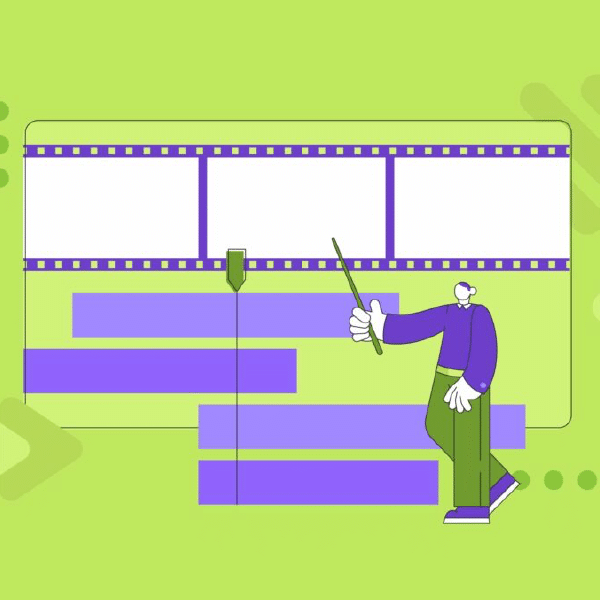For decades, animation and motion graphics have been utilized to help both filmmakers and advertisers tell their stories. Their clever use of unique visuals always helps to enhance plain shots or dull footage and in more recent years, wildly exciting motion graphics and animation techniques have arisen. While most of these trends can be found throughout the advertising industry, some of the most creative and memorable uses can be found on television and in theaters. Here are a few examples—see if you recognize them.
1. Multidimensional Graphics
Multidimensional graphics are the result of combining and creatively morphing different types of footage and styles of animation to create a richer and more complex visual environment. The majority of animated projects throughout the history of the medium have relied on one style of animation to tell their story since it can appear more consistent. However, in recent years, films like Puss in Boots: The Last Wish and the Spider-Man: Into the Spider-Verse franchise have proven that multiple styles of animation can be utilized in beautiful, clever ways. This not only helps to keep audiences more engaged but also assists in displaying some much-needed diversity in the animation industry.
2. Claymation/Stop-Motion
One of the oldest and most painstakingly impressive forms of animation is stop-motion, specifically that using claymation. This animation style has been prevalent for decades since the days of the popular Wallace and Gromit series up until some newer examples, such as Marcel the Shell with Shoes On and Guillermo del Toro’s Oscar-winning Pinocchio. This art form requires taking individual photographs of a scene full of characters and moving them a microscopic amount one at a time, eventually putting the photographs together to create the illusion of a moving image. Stop-motion animated films can take upwards of 5 or 6 years to produce due to the sheer amount of craftsmanship but once finished, the result is an undeniably beautiful and impressive cinematic experience that has the power to linger in the audience’s minds for years.
3. Hyper-Realistic Animation
Another incredibly popular trend in modern animation is making an animated art style as hyper-realistic as possible, to the point where it’s often hard to distinguish if it was shot in real-time or not. This technique is not used as much in film as it is in television, where one of the most popular trends is to create a title sequence that encapsulates the tone and aesthetic of the show. Shows like The Last of Us and House of the Dragon utilize this technique perfectly, as the eerie, post-apocalyptic vibes of the former and royal, medieval aura of the latter are cleverly represented by the sweeping, realistic animation. This technique might not have a lot of use in long-form movies right now but the attention to detail in making these 3-D animations as viscerally real as possible is nothing short of awe-inspiring
4. Maximalist Outlines
This is a style of animation and motion graphics that is still working out some kinks in the world of film and television. This style can convey a great deal of color and personality in the world of 2-D animation but in 3-D, is beginning to find its footing outside of the video game industry. This technique means using specific positioning and computer-generated 3-D models to achieve angles and camera movements that would otherwise not be possible through a real lens. Newer films like The Flash and Marvel movies of the last few years have used this technique to create sci-fi environments that entirely encompass the actors and any live-action footage that was shot. Whether or not this technique actually succeeds in making anything that doesn’t look uncanny is yet to be determined—but determined is one thing that studios with $250 million budgets sure are.
5. Brand Animations
The easiest way to recognize a specific brand or company is often their logo and when that is put into motion before any kind of video product, it greatly enhances that memorability. The Pixar introduction wouldn’t be as iconic if not for the lamp stomping around and audiences wouldn’t know if they were watching a Netflix original if not for the speaker-shattering “dun-dun” beforehand. These kinds of animations are becoming more and more prevalent since movie studios and larger media companies want their brand identities to take front and center. Especially now in the age of streaming, brands are putting more resources into building their personality and the addition of motion graphics and animation into that branding is a huge part.
6. AI (Artificial Intelligence)
In the last few years, the rise of AI in the creation of art has, unfortunately, been a rising trend. Using artificial intelligence as a resource can be beneficial if treated similarly to a search engine but the use of AI in the production of motion graphics and animation can be a bit scary. In a world where writers are striking against studios to prevent them from eliminating actual, human-written stories and AI is growing to be a more prominent force in entertainment, the thought of robots taking over can be terrifying. While major studios have yet to implement AI-generated animation or “footage” in any of their television or films, the day is surely soon to come and hopefully, audiences will be smart and cautious enough in what forms of media they choose to support.
